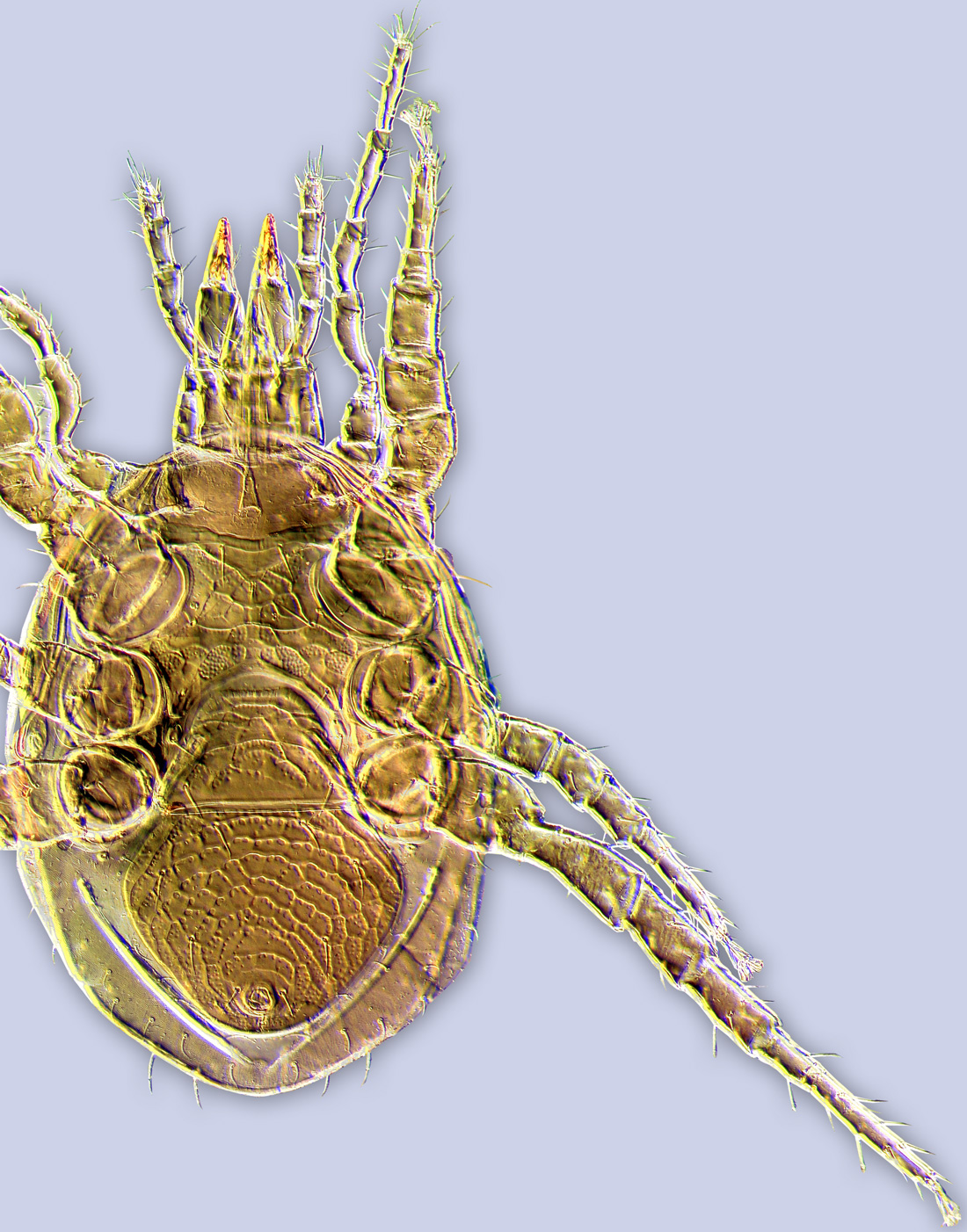Bee Mites : Acari : Parasitiformes : Mesostigmata : Macrochelidae : Macrocheles
Macrocheles praedafimetorum Richards and Richards, 1977
Macrocheles praedafimetorum Richards et Richards, 1977: 711, Figs 1-7; Crozier, 1989: 167.
Material. (paratypes). 1 male - Canada: Alberta, Bluff Mt. [label reads Prairie Bluff Mt.], 49°20'N 114°06'W, ex nest of Bombus terricola (=B. occidentalis), 16 Aug 1971, K. and L. Richards, USDA-Maryland; 1 male, same data, ex nest of Bombus bifarius; 2 females, 1 deutonymph - same data, ex nest of Bombus terricola, 7 Aug 1971; 1 protonymph - same data, 4 Aug 1974; 1 larva - Canada: Alberta, Lethbridge, laboratory culture, 4 Dec 1975, K. and L. Richards, USDA-Maryland.
Hosts.Apis mellifera Linnaeus, 1758
Bombus (Bombias) nevadensis Cresson, 1874
Bombus (Bombus) terricola Kirby, 1837 (as occidentalis)
Bombus (Cullumanobombus) rufocinctus Cresson, 1863
Bombus (Fervidobombus) fervidus (Fabricius, 1798) (as californicus)
Bombus (Pyrobombus) bifarius Cresson, 1878
Bombus (Pyrobombus) centralis Cresson, 1864
Bombus (Pyrobombus) flavifrons Cresson, 1863 (type host)
Bombus (Pyrobombus) frigidus Smith, 1854
Bombus (Pyrobombus) huntii Greene, 1860
Bombus (Pyrobombus) melanopygus Nylander, 1848
Bombus (Pyrobombus) mixtus Cresson, 1878
Bombus (Pyrobombus) ternarius Say, 1837
Bombus (Pyrobombus) vagans Smith, 1854
Bombus (Subterraneobombus) appositus Cresson, 1878
Distribution. Canada: Alberta.
Biology. Macrocheles praedafimetorum is a polyxenous species occurring in the nests of many species of bumble bees, although fewer in the nests of Bombus rufocinctus and B. appositus, which emerge and construct nests later in the spring.
The mated female mite is the phoretic stage. Bumble bees are not the vector on which this mite entered the nests. A dung-inhabiting beetle, Onthophagus nuchicornis L. (Coleoptera: Scarabaeidae), was observed entering a bumble bee nest with three female mites attached. This beetle is apparently attracted to the bumble bee nests by the decaying material in the bottom of the nest.
Macrocheles praedafimetorum is a predatory mite. It can feed on the nematode Caenorhabditis sp., which occurs in profuse numbers in moist rotting material in bumble bee nests. The mite was also observed feeding on the eggs, larvae, and adults of Coboldia fuscipes (Meigen) (Diptera: Scatopsidae) and an unidentified psychodid. Larvae of these flies feed on the decaying nest material, and populations are high in some nests. These mites are cannibalistic; newly molted protonymphs were observed eating larvae, while females ate larvae and protonymphs. Perhaps in response to this behavior, females laid up to 10 eggs inside empty fly pupal cases.
Macrocheles praedafimetorum is an arrhenotokous species, the unfertilized females producing only males and fertilized females giving rise to both sexes. Average life span for males is 21.8 days (range 6-49, n=19), which is significantly shorter than that for females, 36.2 days (range 13-73, n=9). Females more commonly occur in the nests, because the females live longer in the phoretic stage and withstand greater environmental fluctuations (i.e., reduced humidity and food) than the males. Most females must mate before dispersing as they produce both males and females upon arrival at the new food source. Males apparently sense when female deutonymphs are about to molt. The male climbs on the female's back and remains until she molts, at which time it crawls under the female, positioning itself so that its chelicera meet the female's genital plates. Spermatophores are then transferred by the chelicera.
The mites are also common in artificial domiciles. Underground domiciles were preferred probably because the early nesting bumble bee species that occupied these domiciles had larger populations resulting in more accumulating debris and decaying material. The mite does not appear to prefer domiciles placed in open meadows or above ground. Those domiciles were usually drier, had less decaying material, and fewer debris-feeding organisms. The mite was also found in cattle dung.
Macrocheles praedafimetorum has no direct effect on the bumble bee population within the nest. The mite exploits a wide range of saprophagous organisms common to dung, decaying matter, bumblebee and honeybee nests (Richards and Richards, 1977; Crozier, 1989).
References
Image Gallery
B. OConnor and P. Klimov ©
Created: April 23, 2012
Last modified: 

